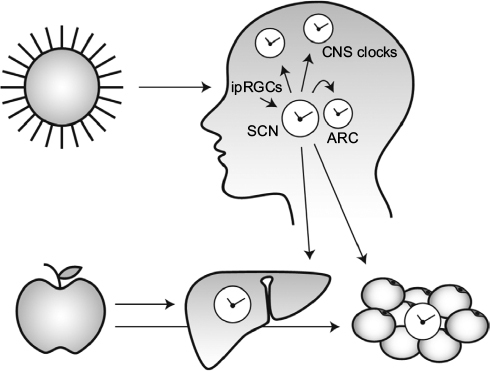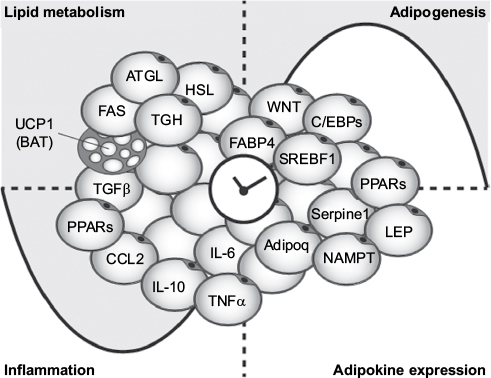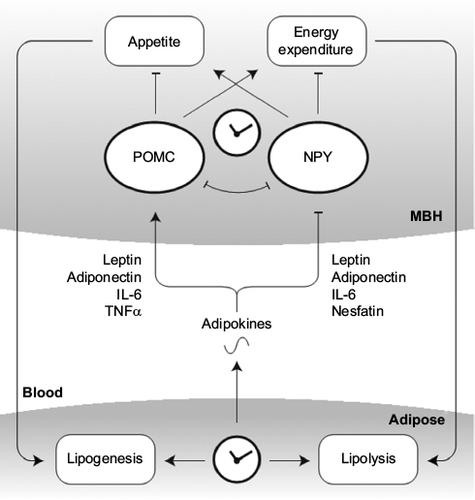Figures & data
Figure 1 Different zeitgebers reset the circadian clock network. The circadian master pacemaker in the SCN receives light information via ipRGCs to coordinate peripheral and central subordinate clocks. In this way, behavior and physiological processes are aligned to time-of-day-specific requirements. Peripheral tissue clocks are sensitive to food-mediated signals and adjust to alterations in the diurnal feeding regime. Because food resetting does not affect the SCN, mistimed feeding promotes internal desynchrony.

Figure 2 Adipocyte clocks and adipose physiological rhythms. The expression patterns of several adipose genes are under circadian control regulating adipose over the course of the day.

Table 1 Overview of adipose tissue phenotypes of clock gene-mutant mice
Figure 3 Adipose–brain cross talk in the regulation of energy homeostasis. Rhythmically regulated adipokines cross the blood–brain barrier to affect appetite- and energy expenditure-regulating circuits in the mediobasal hypothalamus (MBH). In turn, altered energy intake and demands remodulate adipose function along the day.

